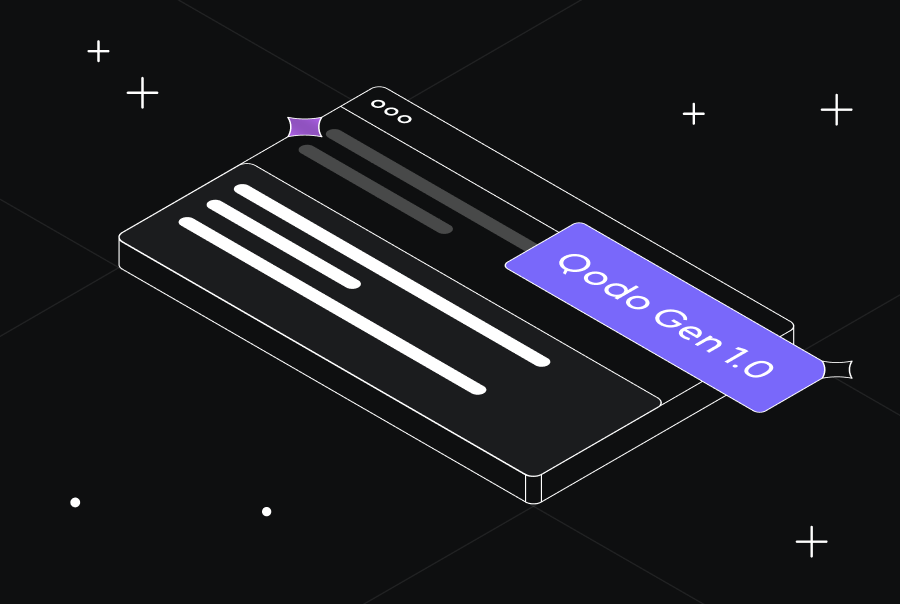Agile Software Development: Best Practices for Clean Code and Continuous Improvement


Agile methodology is often considered the best approach for software development because it provides a framework that enhances flexibility, collaboration, and efficiency. Unlike traditional development methods, agile focuses on delivering small, incremental improvements, enabling teams to adapt quickly to changing requirements and feedback. This iterative approach fosters a dynamic and responsive development environment, making it a preferred choice for many software development teams.
In this post, we will investigate essential coding practices that align with agile principles, ensuring exceptional software development.
What is Agile Programming?
Agile programming is a cornerstone of the agile methodology. It involves a set of practices designed to improve collaboration, communication, and responsiveness within development teams. By breaking down projects into manageable chunks and promoting continuous feedback, agile programming ensures that teams can quickly adapt to changes and deliver high-quality software.
Key principles of agile programming:
- Customer collaboration over contract negotiation: Agile programming prioritizes customer involvement throughout the development process. Regular feedback and collaboration ensure that the final product aligns closely with the customer’s vision and requirements, allowing teams to make quick adjustments based on their input.
- Responding to change over following a plan: Agile embraces change, allowing teams to pivot and adjust their approach as new information and requirements emerge. This flexibility contrasts with traditional methodologies that often follow a rigid plan, making it difficult to adapt to changes.
- Individuals and interactions over processes and tools: Agile values the contributions and interactions of team members, fostering a collaborative and communicative environment. This approach promotes a problem-solving culture where team members work together to overcome challenges.
- Working software over comprehensive documentation: While documentation is important, agile emphasizes delivering functional software that provides real value to the customer. Extensive documentation may become outdated quickly. Reducing the time spent on creating and maintaining extensive documentation allows more focus on development.
Agile Software Development Best Practices
Agile development best practices help streamline the development process, improve code quality, and enhance team collaboration.
1. Iterative development
Iterative development means breaking the project into small, manageable iterations or sprints, typically lasting two to four weeks. Each iteration results in a working increment of the software.
It provides the following benefits:
- Allows for regular feedback and adjustments
- Reduces risks by addressing issues early
- Enhances team focus and productivity
2. Continuous improvement
Continuous improvement means constantly adapting and refining the development process based on learnings. At the end of each sprint, the team dedicates time for retrospectives. These meetings involve reflecting on what worked well, what challenges emerged, and how processes can be improved.
Benefits:
- Streamlines processes to eliminate wasted time and effort
- Allows teams to embrace new technologies and cater to evolving customer needs
3. User-centric approach
Agile encourages incorporating user feedback early and often. This is achieved through user interviews, usability testing, or demos after each sprint.
Benefits:
- Helps ensure the final product aligns with the customer’s needs and expectations
Agile Coding Best Practices
Agile coding practices are specific techniques that align with the principles and values of agile methodology programming. While Agile development and coding practices are both critical to successful software development, they focus on different aspects of the development lifecycle. Agile coding best practices ensure that code is clean, efficient, and easy to maintain.
1. Writing clean code
Clean code is easy to read, understand, and maintain. It follows consistent naming conventions, is well-documented, and avoids unnecessary complexity.
- Clean code makes it easier for team members to understand and modify the code. New team members can get up to speed more quickly, reducing the learning curve and enabling them to contribute sooner.
- It reduces the likelihood of bugs and errors. Time spent debugging and fixing issues is reduced, allowing developers to focus more on building new features and improving the product.
- Clean code enhances overall code quality. Delivering a stable and high-performing product improves user satisfaction and retention.
2. Code reviews
Code reviews involve evaluating and discussing code changes with peers before integrating them into the main codebase. This practice ensures the code meets quality standards and adheres to best practices.
- Code reviews help identify potential issues and improvements early in the development process, which is far more cost-effective than addressing them after deployment. Early detection leads to more stable and reliable software.
- The review process encourages discussions about best practices, design patterns, and architectural decisions. Continuous learning through feedback helps in the professional growth of developers, ensuring the team as a whole becomes more skilled and efficient. It also strengthens team relationships and promotes a culture of open communication and mutual respect.
- Code reviews ensure the code adheres to the organization’s established coding standards and guidelines. By maintaining a consistent style and quality, the codebase becomes more maintainable and easier to navigate.
[blog-subscribe]
3. Refactoring
Refactoring is the process of restructuring existing code without changing its external behavior. Including this stage in a development process aims to improve the code’s internal structure and readability.
- Refactoring improves code maintainability and readability and reduces technical debt.
4. Automated testing
Automated testing involves using tools to automatically run tests on the code. These tests can range from unit tests that check individual functions to integration tests that verify the interaction between different parts of the system.
- Automated tests can be run quickly and frequently, often after every code change, ensuring that issues are identified as soon as they are introduced. By catching issues early, automated testing reduces the time developers spend debugging and troubleshooting problems, leading to faster development cycles.
- Automated tests are less prone to human error, providing more accurate and reliable results. Consistent test results give developers and stakeholders confidence that the software is functioning correctly and that recent changes have not introduced new issues.
5. Continuous integration (CI) and deployment (CD)
CI is the practice of frequently merging code changes into a shared repository, often multiple times a day. CD is the practice of automatically deploying every code change that passes automated tests to production. It builds on CI by ensuring that new features and fixes are released quickly.
- By automating the deployment process, CD eliminates the need for manual intervention, significantly speeding up the release cycle. Accelerating the release process allows businesses to get new features and improvements to customers more quickly, providing a competitive edge.
- Automated deployments ensure that the same process is followed every time, reducing the likelihood of human error.
- Changes are made available to users immediately after passing automated tests, allowing for real-time feedback. Real-time feedback provides valuable insights that inform future development and business strategies.
Getting Started with Agile Coding Practices in Your Development Process
By implementing best practices from agile methodology, you empower your team to consistently deliver high-quality software. However, you should remember that agile is a journey, not a destination. Embrace the iterative nature, cultivate a collaborative environment, and prioritize continuous learning – these are the pillars of exceptional software development.
1. Implement short iterations and continuous integration
- Break down your project into smaller, time-boxed development cycles (sprints) for focused work on well-defined features.
- Prioritize user stories in a product backlog, which represents all desired functionalities. Each sprint selects a set of high-priority user stories (features) to deliver within the sprint timeframe.
- Hold sprint planning meetings at the beginning of each sprint to define the specific user stories and tasks to be completed.
- Write unit tests that automatically run during the build process. These tests verify the functionality of individual code units and catch regressions early.
2. Prioritize clean, maintainable code
Clean code is an ongoing process, not a one-time fix. By adopting some techniques and tools, you can improve a culture of code quality within your team.
- Tools like ESLint, Pylint, or StyleCop automatically scan your code for stylistic inconsistencies, potential errors, and adherence to coding standards.
- Auto-formatters like Prettier or Beautify can format your code according to predefined style guides.
- Version control systems like Git allow you to track code changes and revert to previous versions if necessary. This safety net encourages experimentation and refactoring without fear of breaking something.
- Implement code review practices where team members review each other’s code.
3. Foster a culture of testing
- Testing is no longer solely the domain of a dedicated QA team. Every developer should become responsible for writing unit tests and participating in exploratory testing throughout the sprint.
- Focus on testing early and often. Unit tests written by developers catch regressions early, while exploratory testing throughout the sprint uncovers potential usability issues. Leverage test-driven development (TDD), a development practice where developers write tests for a new feature before writing the code to implement that feature.
- Utilize automated testing frameworks like JUnit or Jest to write unit tests that can be run automatically during the build process. This saves time and ensures consistent code quality.
4. Refine continuously with retrospectives
At the end of each sprint, dedicate time for team retrospectives. Discuss what worked well, what challenges emerged, and how processes can be improved.
- Utilize various techniques to gather feedback from team members. Popular options include
- Start, Stop, Continue: Reflect on what new things could be tried (Start), what should be stopped (Stop), and which practices worked well (Continue).
- Kudo Box: Allow team members to anonymously acknowledge each other’s contributions and positive behaviors.
- Five Whys: For challenges encountered, ask “Why?” five times to delve deeper and identify root causes.
- Facilitate a discussion to analyze the gathered data. Identify patterns, key themes, and areas for improvement.
- Turn insights into actionable steps. Define clear goals, assign ownership, and set deadlines for implementing improvements.
Agile offers a flexible and responsive approach to software creation, prioritizing customer satisfaction, collaboration, and continuous improvement. By incorporating the agile practices mentioned above, you can ensure that your software development projects are not only successful but also adaptable to the changing demands of the industry. Agile programming, when implemented correctly, can transform your development process, leading to higher-quality software and higher customer satisfaction.



